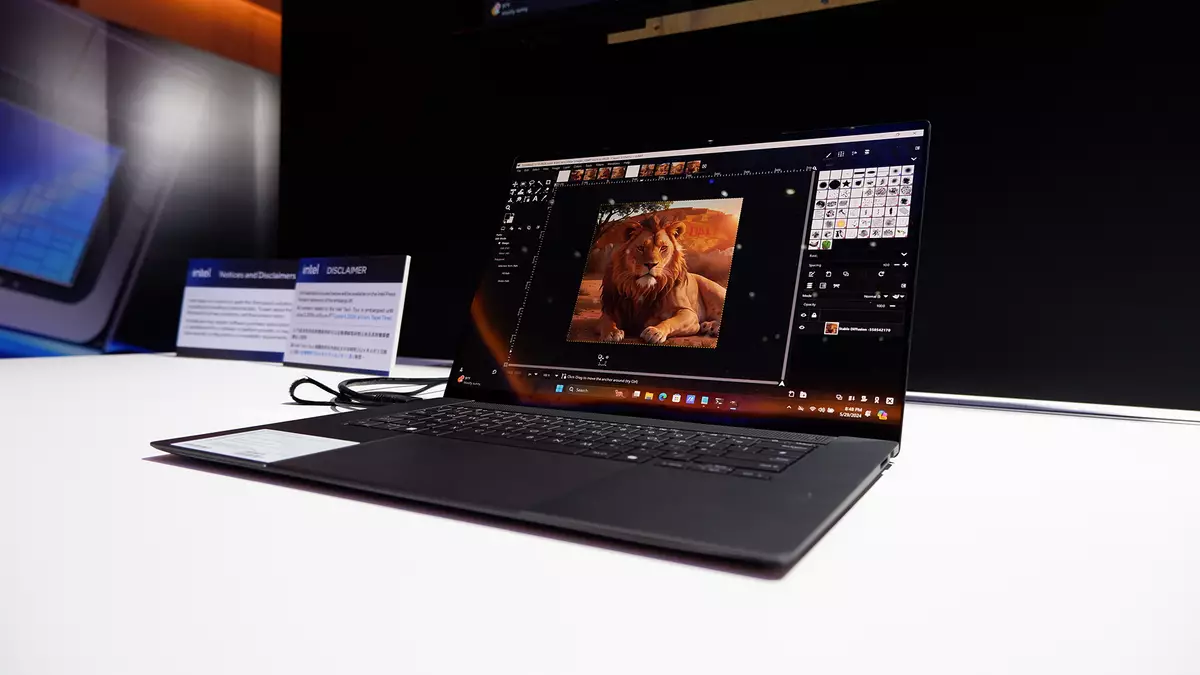In a world increasingly driven by mobile computing, the importance of energy efficiency in devices cannot be overstated. As manufacturers strive to improve battery life while enhancing performance, Intel’s upcoming Lunar Lake mobile chips represent a potential game-changer in the x86 processor landscape. Early reports emphasize not only the impressive efficiency of these chips but also the synergistic advancements in display technology that promise significant reductions in power consumption.
Intel’s announcement regarding the design of the most efficient x86 processor to date has generated considerable interest in the tech community. The Lunar Lake architecture is touted to bring remarkable capabilities to mobile devices. Unlike previous generations, Lunar Lake is expected to balance performance with power efficiency seamlessly. This ideal combination is particularly attractive for users who demand substantial processing ability without sacrificing battery life—a critical factor for mobile gadgets.
Moreover, the advancements in Intel’s Intelligent Display Technology (IIDT) promise to complement the efficiency gains brought by the Lunar Lake processors, unlocking new realms of capability for battery-operated devices. By integrating sophisticated technologies, Intel seeks to eliminate the compromise between high-performance computing and enduring power usage.
Innovative Display Technology: The Winning Combination
A notable highlight from recent reports includes the collaboration between Intel and BOE, featuring BOE’s Winning Display 1Hz technology alongside IIDT Version 2. This innovative arrangement claims to reduce display power consumption by up to 65%. Such a significant reduction raises questions about the underlying mechanisms that enable this leap in efficiency.
The IIDT 2.0 employs several groundbreaking strategies such as Autonomous Low Refresh Rate (ALLR) and User-Based Refresh Rate (UBRR), which can intelligently adjust the refresh rates based on user activity. This means that while one segment of the display may exhibit a high refresh rate—ideal for viewing dynamic content—the remainder can taper off significantly to conserve energy. Particularly in our multitasking-driven environment, this functionality appears remarkably helpful, allowing consumers to engage with multiple tasks while minimizing unnecessary energy expenditure.
Artificial Intelligence plays a vital role in this evolution of display technology, allowing for more personalized and adaptive experiences. With the capability to detect user presence and adjust settings dynamically, Intel systems can achieve an impressive balance between usability and power efficiency.
However, some skepticism persists regarding the practicality of such technologies in everyday scenarios. While the 65% power reduction is indeed enticing, the operational framework where the display might run at a single Hz prompts concerns regarding usability. Continuous manipulation of refresh rates may lead to a choppy user experience if not executed with precision.
Additionally, the advancements in power-efficient technology must prove themselves in real-world circumstances. As seen with devices like the Asus Vivobook S 14, which claims an astonishing 27 hours of battery life thanks to Lunar Lake’s architectural advancements, the ultimate measure of success will lie in user experience and feedback.
While the intelligent display tech can significantly extend battery life, particularly for everyday tasks where high refresh rates are not required, the potential frustrations inherent in fluctuating refresh rates should not be discounted. Users may find it disruptive if the display constantly shifts between modes—a situation reminiscent of the notorious OLED burn-in protective measures that can obstruct workflow at inopportune moments.
A Promising Horizon for Mobile Devices
Intel’s endeavors in merging high-efficiency processors with advanced display technology like the IIDT 2.0 appear to hold considerable promise. The integration of these innovations could dramatically reshape how mobile devices function, making extended battery life an attainable reality. Whether this technology lives up to its ambitious claims remains to be seen, but the convergence of performance and energy efficiency signifies a significant milestone in the evolution of mobile computing. If successfully implemented, Intel and BOE’s collaboration could set a new bar in the industry—one that many will undoubtedly strive to emulate in the coming years.


Leave a Reply